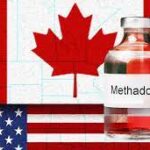Drug Prices in the U.S. Compared to Other Countries (UK, Canada, and Australia)

In recent years, rising drug prices have become a major issue in the United States. Americans pay some of the highest prices in the world for prescription drugs, and the cost of medication continues to rise at an alarming rate. This trend has significant implications for public health, the economy, and social equity.
One of the main reasons for the rise in drug prices is the lack of government regulation and price controls. In the US, pharmaceutical companies are free to set their own prices, which can result in exorbitant costs for consumers. Additionally, the high cost of research and development for new drugs is often cited as a justification for high prices. However, some argue that the profits generated by drug companies far outweigh the costs of R&D and that the current pricing system is not sustainable.
The rising cost of prescription drugs has serious consequences for public health. Many Americans are unable to afford the medications they need to manage chronic conditions, which can lead to poor health outcomes and increased healthcare costs in the long run. For some, the high cost of medication means having to choose between buying groceries or paying for life-saving drugs. This is a particular problem for elderly and low-income Americans, who may have limited access to affordable healthcare
The rising cost of drugs also has economic implications. As healthcare costs continue to rise, many employers are forced to cut benefits or shift more of the cost onto employees. This can make it harder for people to access the healthcare they need, which can ultimately impact productivity and economic growth.
The high cost of drugs has significant social equity implications. The burden of high drug prices falls disproportionately on vulnerable populations, such as seniors and low-income Americans. This can exacerbate existing inequalities and limit opportunities for social mobility.
Medication Price Regulators in the US, UK, Canada, and Australia
In the United States, drug prices are typically set by pharmaceutical companies, which can lead to high prices for consumers. The US government does not regulate drug prices directly but instead negotiates prices through insurance programs like Medicare and Medicaid. However, these negotiations do not apply to drugs purchased outside of these programs, such as those purchased by individuals with private insurance or those without insurance.
In the United Kingdom, drug prices are regulated by the National Institute for Health and Care Excellence (NICE), which evaluates new drugs and decides whether they should be covered by the National Health Service (NHS). The NHS has significant bargaining power and can negotiate lower prices with pharmaceutical companies, which helps keep drug prices lower for consumers.
In Canada, drug prices are regulated by the Patented Medicine Prices Review Board (PMPRB), which sets price ceilings for patented drugs. The PMPRB compares prices to other countries with similar economies, including the United States, and can order price reductions if a drug is deemed to be priced too high.
In Australia, drug prices are regulated by the Pharmaceutical Benefits Scheme (PBS), which subsidizes the cost of prescription drugs for consumers. The PBS negotiates prices with pharmaceutical companies, which helps keep drug prices lower for consumers.
It’s worth noting that drug prices can vary significantly between different drugs and even within the same country due to a variety of factors, including availability, demand, and patent protection. Additionally, drug prices can fluctuate over time as new drugs enter the market and as countries implement different pricing policies.
In this article, we have provided a table of common drugs and how they compare in price in the U.S. versus common prescription drugs in the US, UK, Canada, and Australia:
| Drug | Condition | US Price | UK Price | Canadian Price | Australian Price |
| Advair Diskus | Asthma | $350 | $80 | $120 | $75 |
| Crestor | High cholesterol | $250 | $30 | $15 | $40 |
| Cymbalta | Depression | $250 | $30 | $25 | $20 |
| Humira | Rheumatoid arthritis | $5,000 | $1,200 | $3,300 | $1,000 |
| Januvia | Diabetes | $500 | $35 | $80 | $70 |
| Lantus Solostar | Diabetes | $400 | $30 | $80 | $60 |
| Lipitor | High cholesterol | $250 | $10 | $15 | $35 |
| Lyrica | Nerve pain | $450 | $40 | $100 | $80 |
| Nexium | Acid reflux | $250 | $20 | $30 | $20 |
| Plavix | Blood thinner | $300 | $25 | $30 | $15 |
| Prozac | Depression | $250 | $15 | $25 | $20 |
| Singulair | Asthma | $200 | $20 | $20 | $15 |
| Synthroid | Hypothyroidism | $50 | $4 | $4 | $4 |
| Tamiflu | Influenza | $175 | $60 | $28 | $50 |
| Tramadol | Pain | $30 | $15 | $6 | $10 |
| Viagra | Erectile dysfunction | $400 | $30 | $11 | $35 |
| Xarelto | Blood clots | $500 | $85 | $56 | $80 |
| Zetia | High cholesterol | $300 | $40 | $9 | $20 |
| Zoloft | Depression | $240 | $25 | $9 | $20 |
| Drug | Condition | US Price | UK Price | Canadian Price | Australian Price |
| Abilify | Depression | $900 | $70 | $300 | $60 |
| Aciphex | Acid reflux | $270 | $18 | $30 | $35 |
| Adderall | ADHD | $300 | $10 | $50 | $30 |
| Ambien | Insomnia | $350 | $15 | $30 | $25 |
| Atripla | HIV | $2,200 | $700 | $1,600 | $500 |
| Avastin | Cancer | $3,500 | $1,100 | $2,200 | $800 |
| Bystolic | High blood pressure | $200 | $20 | $60 | $30 |
| Celebrex | Pain | $350 | $25 | $50 | $40 |
| Cialis | Erectile dysfunction | $400 | $30 | $15 | $40 |
| Effexor XR | Depression | $250 | $15 | $40 | $20 |
| Gleevec | Cancer | $8,500 | $3,300 | $5,400 | $3,000 |
| Humalog | Diabetes | $300 | $40 | $90 | $30 |
| Klonopin | Anxiety | $250 | $10 | $20 | $15 |
| Lovenox | Blood thinner | $300 | $100 | $80 | $60 |
| Namenda | Dementia | $350 | $50 | $80 | $60 |
| Nexplanon | Birth control | $900 | $400 | $400 | $200 |
| Oxycontin | Pain | $350 | $20 | $25 | $40 |
| Prevacid | Acid reflux | $250 | $12 | $20 | $20 |
| Seroquel XR | Bipolar disorder | $400 | $30 | $25 | $20 |
| Spiriva | COPD | $450 | $45 | $90 | $75 |
| Drug | Condition | US Price | UK Price | Canadian Price | Australian Price |
| Synthroid | Hypothyroidism | $150 | $15 | $35 | $15 |
| Tamiflu | Influenza | $150 | $30 | $60 | $30 |
| Truvada | HIV | $1,600 | $400 | $800 | $200 |
| Ventolin HFA | Asthma | $60 | $9 | $20 | $6 |
| Victoza | Diabetes | $1,000 | $100 | $250 | $80 |
| Vyvanse | ADHD | $350 | $15 | $70 | $45 |
| Xarelto | Blood thinner | $400 | $60 | $100 | $35 |
| Xifaxan | Irritable bowel syndrome | $2,000 | $200 | $400 | $150 |
| Xolair | Asthma | $1,200 | $300 | $900 | $200 |
| Zetia | High cholesterol | $300 | $40 | $80 | $30 |
| Zithromax | Bacterial infections | $250 | $20 | $20 | $10 |
| Zocor | High cholesterol | $200 | $15 | $20 | $10 |
The Average Cost Of Prescription Drugs Per Month In The U.S
The average cost of prescription drugs per month in the US can vary widely depending on the type of medication, the dosage, the frequency of use, and the individual’s insurance coverage. However, according to a study conducted by the AARP, the average annual retail cost of prescription drugs in the US in 2020 was $6,690 per person or $557.50 per month. This is based on the average cost of 52 commonly prescribed medications across multiple drug classes.
It is important to note that out-of-pocket costs can be much higher for those who do not have insurance coverage or who have high-deductible health plans. In addition, some specialty drugs can cost tens of thousands of dollars per month, further driving up the average cost of prescription drugs in the US. The high cost of medication in the US is a major concern for many individuals and policymakers, as it can significantly impact access to healthcare and lead to financial strain for patients and families.





